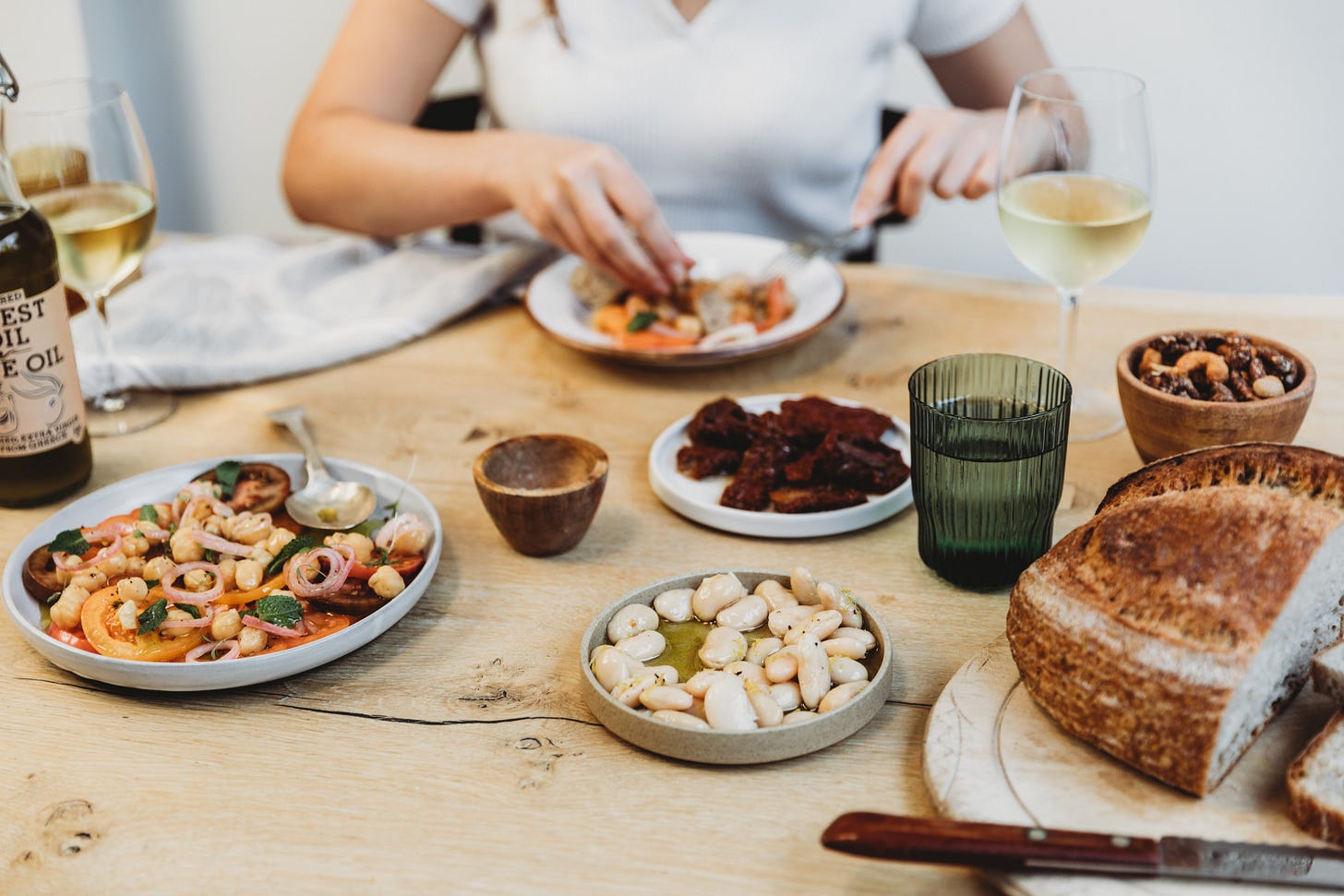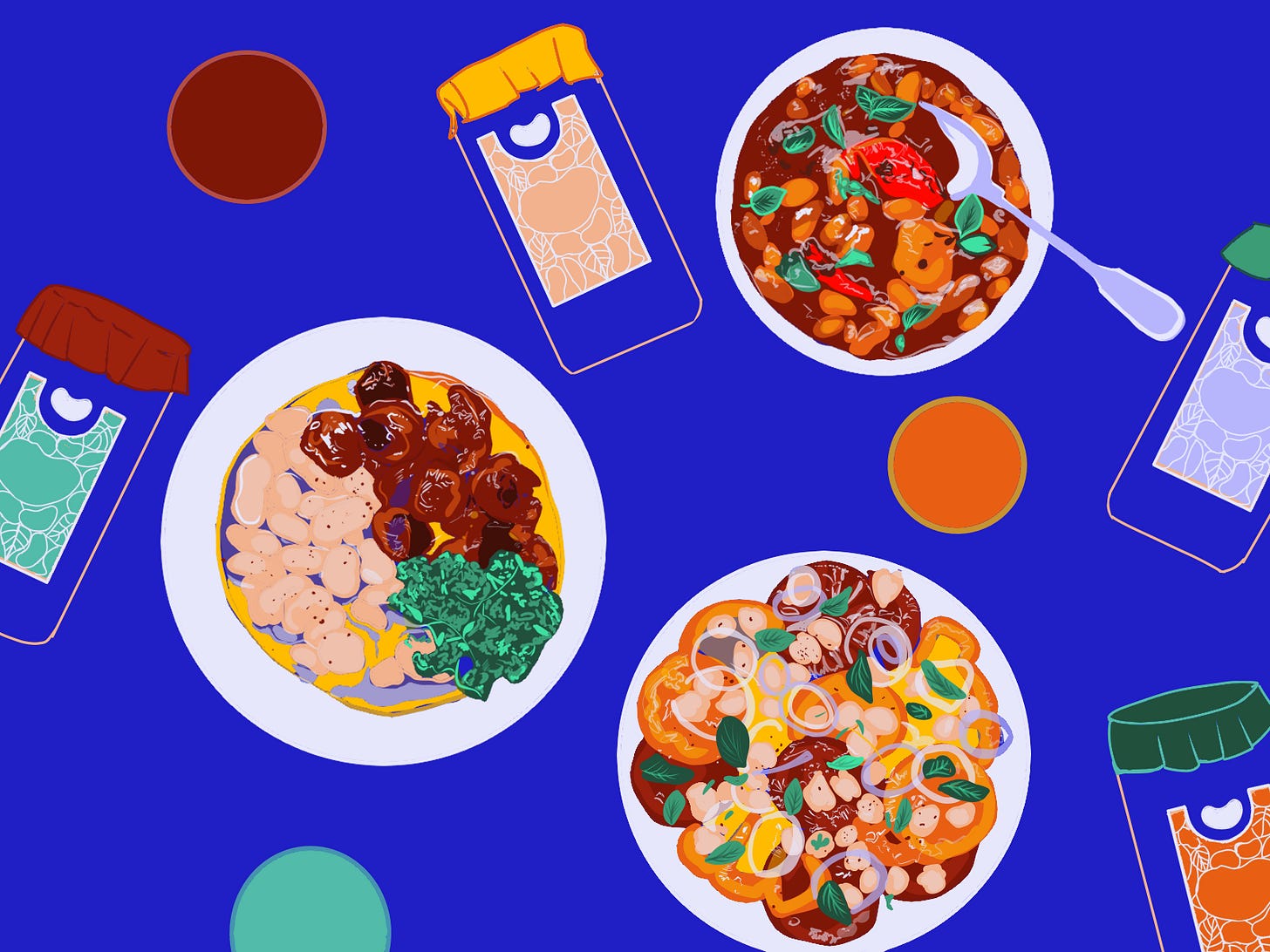Let's talk about beans, baby.
Why a bowl of beans is the right choice for the climate, with the founder of Bold Bean Co. Plus: how Chile is stepping forward as a green hydrogen hub.
🌏 Thanks for signing up to engage with small, purpose-driven media. If you get value from what we’re doing, please consider supporting us by becoming a paid subscriber. This will ensure we can keep publishing forward-thinking environmental journalism. 🌏
7 questions with Bold Bean Co founder, Amelia Christie-Miller
Why have we been ignoring the most affordable, accessible and carbon-friendly source of protein for all this time?
Bold Bean Co burst onto the sustainable food scene very recently, with one core mission: make beans cool again. We spoke to the company’s founder about why we’ve been thinking about them in the wrong wrong all this time – and why they’re a key part of a green food system and diet.
Why do you believe we need to embrace beans to eat more sustainably?
Beans are the most climate-friendly food we have, and they're being overlooked by mainstream food culture. Our soils are degrading - beans help nourish and protect them. Temperatures are rising and populations growing. The most affordable, most widely accessible and carbon-friendly source of protein is beans! The problem is, they're not cool... yet.
Tell us about your previous work in the food sustainability space. What did you learn there?
My background is in foodtech. At Foodchain [where Miller was Head of Sales and Marketing] we were working to build more transparency into the supply chain and empower small suppliers. We were working with top London restaurants like Lyle's and Spring and some of the most passionate food producers we have in this country. These are the thought leaders in food and the land that they grow on - I learned a lot about regenerative agriculture, soil health, and food security, all the while falling deeper in love with beans and how they can solve the problems we face.
What principles did you follow in designing and growing your brand?
Hilariously, I was trying to make my brand FAR 'cooler' to appeal to a younger market - calling it "humble" as a nod to Kendrick Lamar and making sure all the copy would be lower case on pack to be 'chill'. Two minutes trying to write some text for this tone, I desperately failed. Being cool did not come naturally to me. So with building the brand, I then looked to bring to life the "full of beans" enthusiasm I have for beans to come from a genuine standpoint - it's made it far easier!
There are a real wealth of exciting plant-based food brands out there at the moment. How does it feel to be operating in that market, and is there anything you think is still lacking?
There is so much innovation in big food meat-free. But besides these products being ultra-processed and terrible for health, they're a capitalist response to the problem.
High-tech formulas and mysterious ingredients mean that there are huge margins to be made by keeping these secretive and expensive.
We're taking a different approach. We hope that by starting a movement of bean loving, we'll trigger a trickle-down of bean eating whatever your budget allows. Because beans - whether cooked to perfection in a fancy jar or soaked and simmered from dried on your hob - are available to everyone. They're just not cool.
How can we encourage people and societies to eat in a more environmentally friendly way?
Whilst working in foodtech, I was hearing so much about how technology was going to fix our food system. But the wrong companies get funded to grow.
While I was waiting patiently for blockchain traceability and supply chains to be fixed, I saw the movement of Oatly transform consumer behaviour; it got blokes I never would have dreamed of going dairy-free proudly holding an oat milk carton. I truly believe that brands can change the world by getting people to see things differently. That's what we want to do.
What kind of change do we need to see to our food system overall to meet climate targets?
For me, the food system is completely governed by our consumer culture. So we need to change the desires of the people before we can change the food system. It's all very well growing fields and fields of beautiful British bean varieties to build resilience and soil health, but if the end product is fed to livestock we really aren't going to get anywhere.
Change starts with where we spend our cash.
What does success look like for you and Bold Bean Co?
My dream would be for Bold Bean to start a movement of bean-loving. I'd like every household in the UK to be consuming beans at least three times a week by 2030.
Follow Amelia Christie-Miller and Bold Bean Co on Instagram.
Chile: a hub for green hydrogen?
The Atacama Desert might help Chile shift from being a net energy importer, to a clean energy exporter. By Belén Silva.
Today, hydrogen is widely used in many industries as feedstock or a source of energy. Food, chemicals, fertilisers and plastics production are some industries where hydrogen plays a major role as a raw material. It’s conceived as being particularly crucial as we move towards zero emissions, and try to solve the green energy storage dilemma.
Right now, 95% of hydrogen production still involves fossil fuels and releases contaminant gases like CO and CO2. But the race is on to deliver totally ‘green’ hydrogen.

What will it take?
Green hydrogen is basically hydrogen produced with renewable energy, e.g. solar or wind.
Hydrogen is made via a chemical reaction called electrolysis, where water breaks down into the two elements that form this molecule: hydrogen and oxygen. But in order for this to occur, energy must be supplied to the system. For the resulting hydrogen to be ‘green’, the energy supplied must come from renewable energies. If fossil fuels are used instead, it’s called ‘grey’ hydrogen.
After production, green hydrogen can be stored and used for the opposite chemical reaction, in which hydrogen is bonded with oxygen to form water.
This reaction releases energy that can be stored, transported and used in multiple ways. It’s notably useful in industries that demand huge amounts of energy: like steel and cement production, and aviation. Ensuring the necessary amount of energy was available on tap would require a vast number of batteries. As things stand, our batteries aren’t quite sophisticated enough.
Green hydrogen could fill this gap – allowing for the decarbonisation of some industries it’s just not possible to electrify.

Chile’s role
In order to produce huge amounts of green hydrogen, we need renewable energy. A lot of it. And Chile has just that.
Chile’s Minister of Energy said that the country’s renewable energy potential is equivalent to 70 times the current installed capacity. This is because Chile's Atacama Desert has been shown to have the highest long term solar irradiance of any place on Earth.
With 60 ongoing projects, Chile is on its way to becoming one of the world leaders in green hydrogen production and clean energy exports.
In addition to this, it has announced several projects related to the food and chemical industry – which currently use grey hydrogen as a raw material. These include green ammonia and green methanol production plants.

As of November this year, Chile has, according to Minister of Energy Juan Carlos Jobet, signed agreements with Amberes Port (Belgium), and the Ports of Rotterdam and Singapore, in order to create strong alliances for hydrogen exports in the future.
Andrea Moraga Paredes – managing director of Continua Soluciones and Executive director of H2 Chile - told Ours to Save about the main obstacles that stand in the way of green hydrogen production in Chile:
“The main barrier we are facing today is that the hydrogen economy is still in process. Today, green hydrogen prices are not competitive enough to replace other fuels. Financing is key to overcome this, but also a reduction in the prices of renewable energies and electrolysers.”

She also talked about the immense potential of Chile in the green hydrogen industry;
“Because Chile is a narrow country with a such a large coast, there is already a developed port infrastructure that can be used for the energy business. All hydrogen generation points are close to the port areas.”
She added:
“When we talk about renewable energies, Chile has been said to be the best country to invest in.”
“This is not only because of its geophysical conditions, but also because of its strong green hydrogen development policies and energy regulations oriented to the international market.”
Belén Silva is a Chemical Engineer from Buenos Aires, Argentina. She works as a freelance environmental consultant and writer. You can keep up with her work via Instagram, YouTube or her blog, Idonella.







